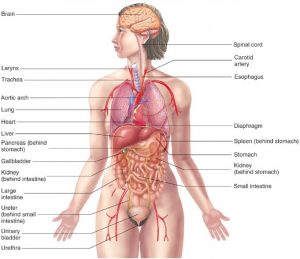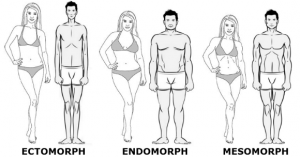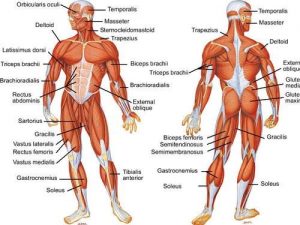I watched a Jamcore DZ’s video and I learned good stuff.
If you didn’t read the Part 1, click here.
Knowing your type of morphology (ectomorph, mesomorph or endomorph) helps a lot to select a training program.
Morphology
Ectomorph
An ectomorph tends to be thin, and struggles to gain weight as either body fat or muscle. They can eat piles of food and stay looking the same, even when gaining muscular weight is their biggest goal. People who battle to gain muscle are often known as “hardgainers.”
Ectomorphs tends to have a lean build, long limbs, and small muscle bellies. Even if an ectomorph manages to put on weight, they may still look skinnier than they are, particularly in the calves and forearms.
Being an ectomorph doesn’t mean you’re doomed to be weak, though. You can still get remarkably strong, and you can be every bit as fit and healthy as someone who looks larger and more muscular. But if you want to gain weight, you’d better be prepared to eat like you’ve never eaten before.
Mesomorph
The mesomorph has a middle-of-the-road build that takes the best of both worlds. They tend to have wide shoulders, a narrow waist, relatively thin joints, and round muscle bellies.
In short, if you’re a mesomorph, you have a natural tendency to be fit and relatively muscular. Does this mean you can do nothing, eat everything, and get away with it forever? Definitely not—and you’re not necessarily healthier than the other two types, either. But you may be able to “bounce back” from being out of shape more easily than the other two body types, gaining muscle and burning fat with comparative ease.
Endomorph
The endomorph tends to gain weight and keep it on. Their build is a little wider than an ectomorph or mesomorph, with a thick ribcage, wide hips, and shorter limbs. They may have more muscle than either of the other body types, but they often struggle to gain it without significant amounts of accompanying body fat. If you ever feel like you gain 5 pounds simply walking by a donut shop, you may be an endomorph.
This definitely doesn’t mean that an endomorph can’t be healthy. They can be every bit as strong, healthy, and capable as the other two groups, and may actually have some strength advantages due to their additional muscle mass. But if and when they decide to lean out, it’ll take hard work!
If you don’t know your morphology type, you can click here .
It’s important to understand that our body is changing all the time due to the environment, age and food. That’s what this theory of Ecto, Meso and Endo is important for me to have results. I know there are people who don’t believe in this theory. My advise is to test this theory about yourself and see if it works or not.
There is also the skeleton and muscle genetics that influence muscle development.
You know, when I started to train seriously, my body responded well to exercises in the first year. I was happy, my body changed quickly. And all of a sudden BOOOOM, my body’s evolution stagnated. I started to worry and I think you know what I’m talking about.
Muscle mass
Your muscle mass is decided by the stress that you will give to your muscle. The more you stress your muscle, the more it will respond. The more you rest, the more your muscle will respond. When you rest, your muscle recovers and your nervous system recovers. Understanding how much stress you put on your muscles is as important as knowing the difference between a set with high reps or low reps.
Look this example in my gym, click here.
You can’t walk around and talk to everyone in your gym like you’re in bar. The gym is not a bar ! When I started using the intensification methods, that’s where I really gain muscle.
Many people ask me if it’s possible to gain muscle and be shredded at the same time. The answer is that the first year of training, yes. In the beginning, you will gain muscle and burn fat, because you’re doing more intense physical activity than the year before.
But when you stop to train for more than 2 weeks , you have muscle atrophy and you start to store more fat.
If you spend several months without training, your muscles will turn into fat. The muscle is a tissue (soft tissue) and the fat is a tissue (adipose tissue). You understand !?! I know, I lost you and it’s the case for many people. The muscle and the fat are both cellular tissue.
It’s for this reason that you always need to continue to train because the more you train, the more you will gain muscle mass. And to gain muscle mass, you need to pay attention to your diet and recovery (sleep).
That’s the basis for gaining muscle. I know that on internet, there are several influencers like Christian Guzman , Steve Cook , Marc Fitt who can say things that others dispute. But if you look deeper, there is only one way to gain muscle (regular training, diet and sleep), influencers explain only variants so don’t panic.
Conclusion
To explain it simply, you have your muscle and behind your muscle, there is fat. Fat is all the time waiting for the muscle works less to cover the muscle. The less you work on your muscle (muscle atrophy), the more the fat will cover your muscle. After several months without training, you will see in the mirror that you have lost your muscles. And you’re going to say : « Shit ».
Use a simple training program to understand the process for an effective training. It will be long. The 12-weeks training program is only a program that starts the process for your body to change, you need to train regularly all year long.
Stop listening to conflicting advice (it’s just for buzz), it’s the best way to stop you to have a better body. Choose a simple training program, adapt it to your schedule and use it all year long.
Share this article if you think it can help someone you know. Thank you.
-Steph


